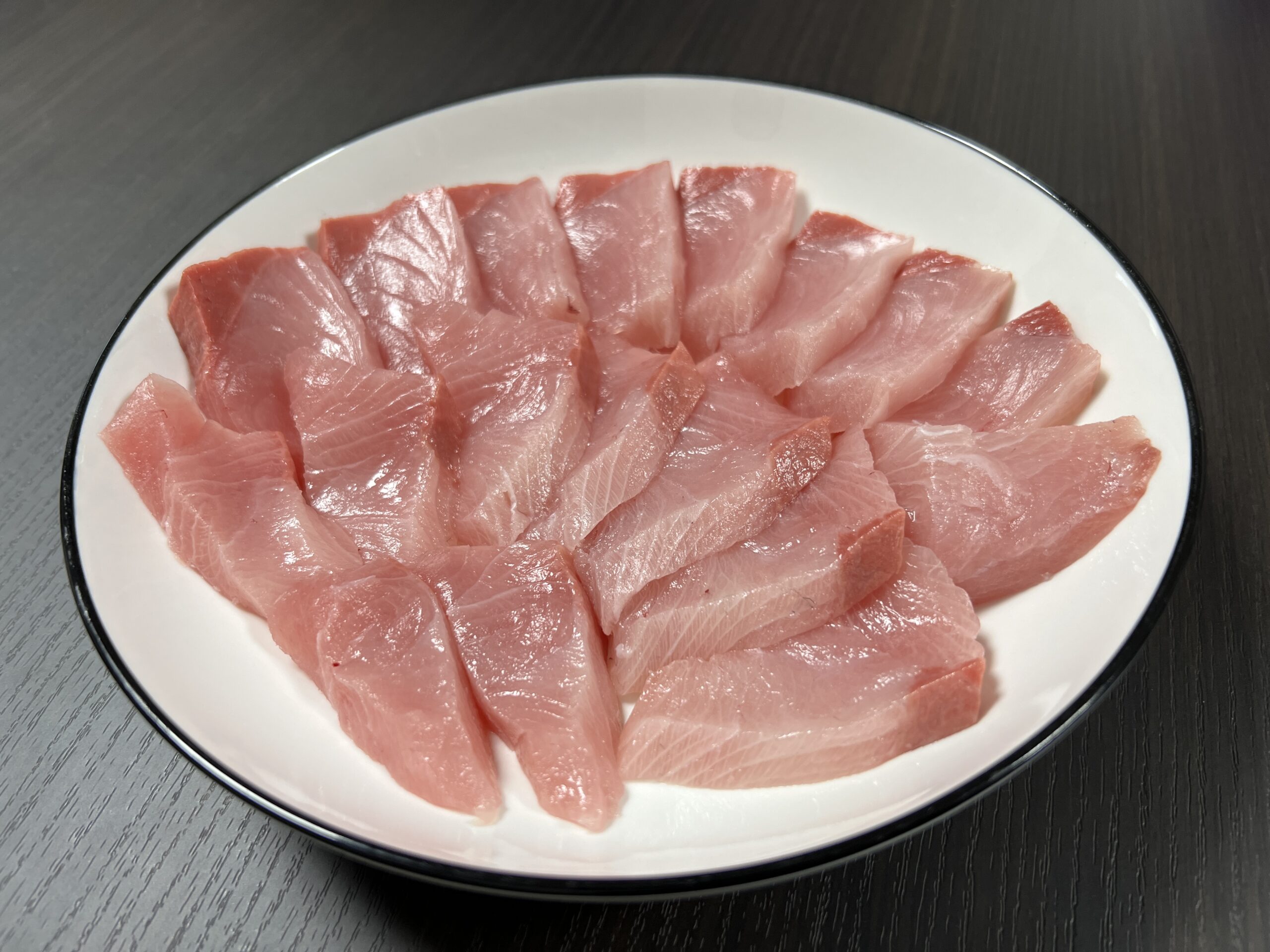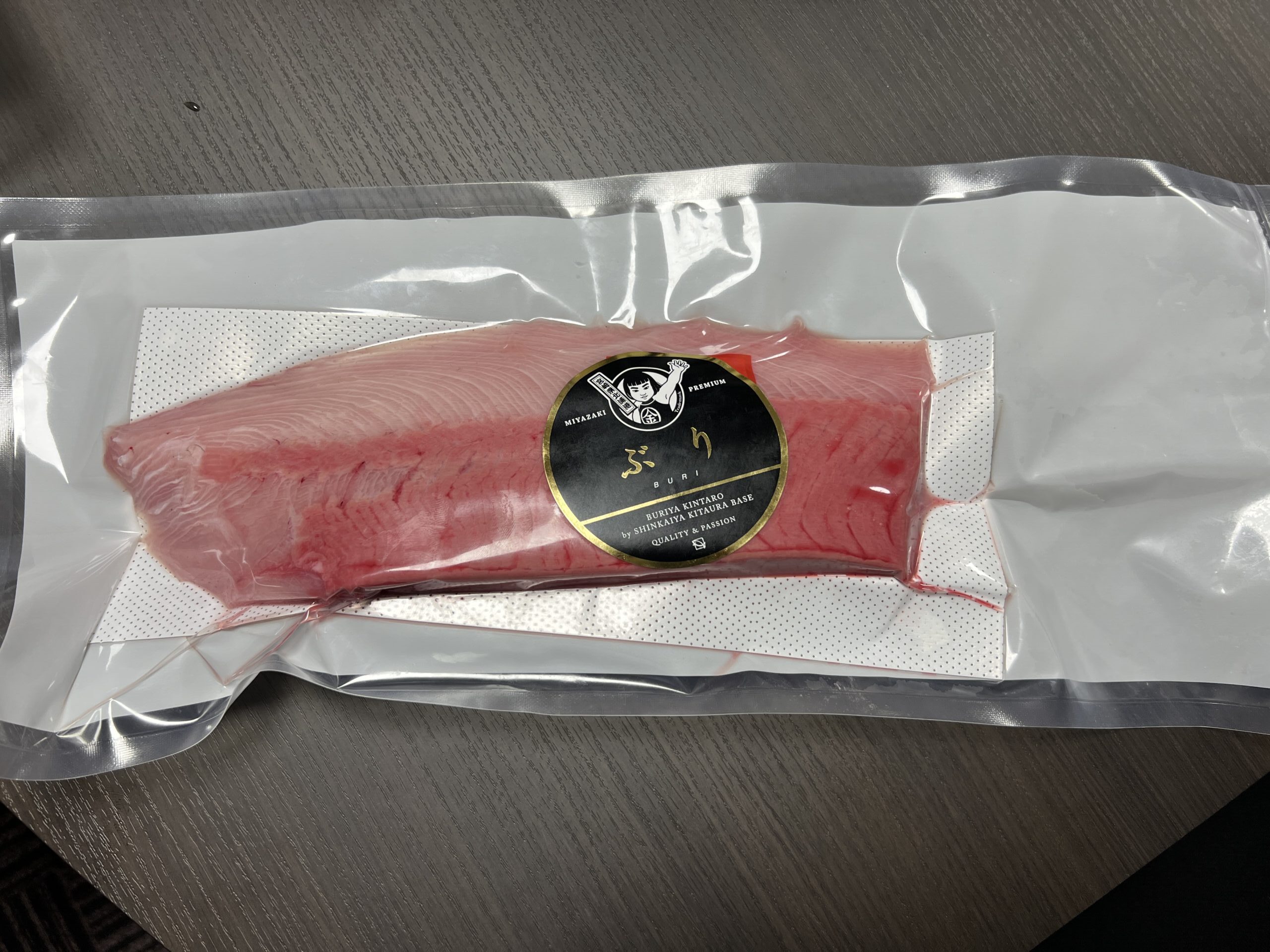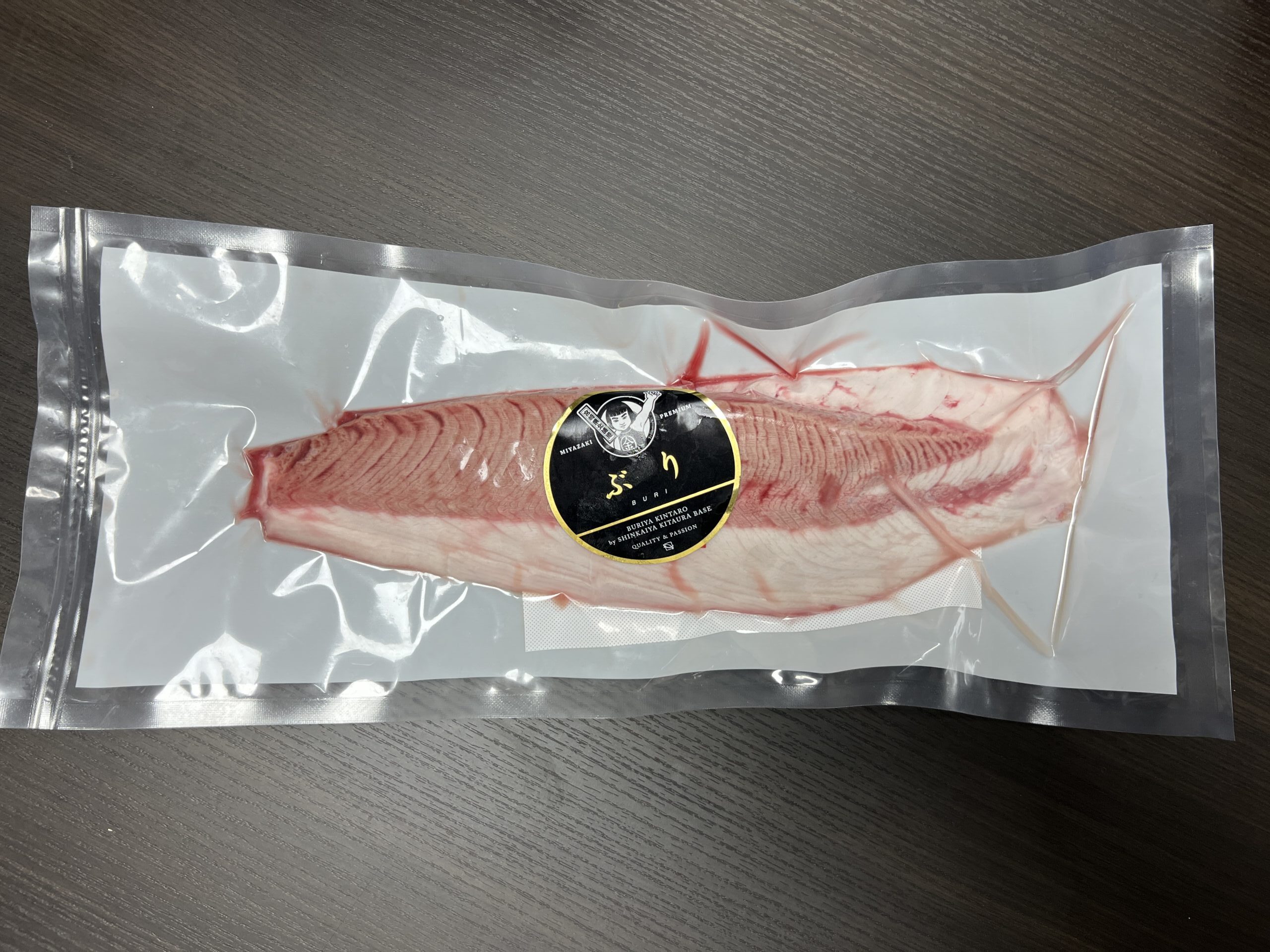ブリフィレ輸出
タイ、ベトナム、香港、中国(禁輸前)、韓国、マカオ etc



ブリは、スズキ目ブリ科に属する魚の一種で、日本をはじめとする東アジアの海域に広く分布しています。ブリは日本では特に人気が高く、寿司や刺身、照り焼き、煮付けなど、多様な料理で楽しまれています。以下、ブリについての詳細をいくつか紹介します。
特徴
大きさ: 成魚は通常、全長1メートルに達することもあり、大型のものでは体重が40キログラムを超えることもあります。
形態: 体は側面から見るとやや扁平で、頭部は比較的小さいです。体色は背部が青緑色で腹部にかけて銀白色をしており、若魚は側面に縦帯が見られます。
生息域: 暖かい海域を好み、日本では北海道から九州、さらには東シナ海や黄海にかけての範囲で見られます。
生態
回遊性: ブリは季節によって回遊する性質があり、水温の変化に応じて移動します。特に大型のブリは冬になると沿岸部に近づきます。
食性: 幼魚はプランクトンを食べますが、成長するにつれて小魚やイカなどを捕食するようになります。
経済的価値
養殖: ブリは養殖が盛んに行われている魚種の一つで、特に日本では高品質の養殖ブリが多く市場に出回っています。養殖技術の進歓迎で年間を通じて安定供給が可能になりました。
市場での位置づけ: 寒ブリと呼ばれる冬場に脂がのったブリは特に高価で、日本の冬の味覚として珍重されます。
栄養
ブリは高タンパクで、オメガ3脂肪酸などの不飽和脂肪酸を豊富に含む健康に良い食材とされています。ビタミンDやEも含まれ、免疫力向上や抗酸化作用が期待できます。
ブリはその味わいだけでなく、栄養価の高さからも多くの人に愛されている魚です。特に、脂ののった冬のブリは日本の食文化において重要な位置を占めています。
Buri, a type of fish belonging to the Seriola genus in the order Carangiformes, is widely distributed in the waters of East Asia, including Japan. Buri is particularly popular in Japan, where it is enjoyed in a variety of dishes such as sushi, sashimi, teriyaki, and simmered dishes. Below are some details about Buri.
Characteristics
Size: Adult fish usually reach a total length of 1 meter, and in some cases, their weight exceeds 40 kilograms.
Form: The body is somewhat flattened when viewed from the side, with a relatively small head. The coloration is blue-green on the back, fading to silvery white towards the belly, and juveniles show vertical stripes on their sides.
Habitat: They prefer warm waters and are found from Hokkaido to Kyushu in Japan, extending to the East China Sea and the Yellow Sea.
Ecology
Migratory behavior: Buri exhibit seasonal migration, moving in response to changes in water temperature. Particularly, large Buri approach coastal areas in winter.
Diet: Juveniles eat plankton, but as they grow, they start preying on small fish and squids.
Economic Value
Aquaculture: Buri is one of the fish species extensively farmed, especially in Japan, where high-quality farmed Buri is widely available in the market. Advances in aquaculture technology have enabled a stable supply throughout the year.
Market positioning: Buri that have fattened up during the winter, known as “Kan Buri,” are especially prized and considered a delicacy of the Japanese winter cuisine.
Nutrition
Buri is high in protein and contains a wealth of unsaturated fatty acids, such as omega-3 fatty acids, which are beneficial to health. It also includes vitamins D and E, which are expected to enhance immune function and have antioxidant effects.
Buri is loved not only for its taste but also for its nutritional value. Especially, the fatty Buri available in winter holds an important place in Japanese culinary culture.
和製堂
WASEIDO CO., LTD
